This Is The Best Kind Of Writing On The Internet
And it might be the most honest form of expression we have.

Last week, someone posted an ad on Craigslist for a Vitamix blender that was less of an ad and more of an It Happened To Me: I Dated A Corporate Lawyer Who Turned Out To, Wait For It, Be A Real Asshole. It had a perfect title, too: “Wanna put my tender heart in a blender — $400.” If you are now or have ever been a woman, you will immediately understand how painfully funny the anecdote is, how it’s so real it gives you a stomach ache:
But you know something has changed. Lately he seems less cute and more boring. You remember that you’re not Gal Gadot and that people are as interesting as you let them be. You say, “I’m sorry if sometimes I look at you blankly instead of listening.” He says, “Sometimes I want to leave.” How did he pass the LSATs? You tell him it’s okay to be human.
The unexpected personal essay on Craigslist is nothing new; give people a form to fill out or a field to write in and they will immediately fuck with it. They will write three-act plays in an Amazon product reviews, or post ASCII art in the comments sections of gossip blogs. Craigslist is clearly aware of the phenomenon, featuring both a “best-of” section as well as a “rants & raves” rubric. But the most notable feature of this kind of writing is that it appears in unexpected places.
It’s like a light troll, or a clever quip—I can think outside your text box! I am a creative human and I will not be limited to your flat, bureaucratic strictures. There’s also an element of the universal human yearning to be acknowledged. Deep down, each of us has a desire to testify, if not perform. (Haven’t you ever wanted to break into song or dance on the subway?) We also want to confer with each other—did you see what I saw? Do you want to talk about it? Would you look at this mole while you’re at it?
We all have strange creativity; that’s what helps us latch on to each other. The best examples are brought out in low-stakes situations: when no one else is looking (though you could make an argument that most things are usually hidden with the end goal of being found). When these bits of writing do get found, they often go viral; they resonate much more than a lot of things that are purpose-built to do so (you might call that “organic lift,” and it’s the kind of high publishers everywhere chase). They could probably technically be labeled “self-published.”
Did you see what I saw? Do you want to talk about it? Would you look at this mole while you’re at it?
These little platform-incongruent Easter eggs give us blips of pleasure; they are like the marginalia of the internet, except they’re more than just notes — they’re little standalone works of art. It’s a few notches above I WAS HERE graffiti, it’s more like “Hello friend, I was here, and I’m a person! Do you like muffins? I love them! Here’s a recipe.” It gives you more than you bargained for, but you’re not mad; it brightens your day. It’s only slightly subversive, and mostly entertaining.
These little platform-incongruent Easter eggs give us blips of pleasure; they are like the marginalia of the internet, except they’re more than just notes — they’re standalone works of art.
I’m not just talking about the accidental poetry of a comments section; this has to be intentional, and genuine—it’s the “dance like nobody’s watching” of internet writing. A dad who fills out a form in the voice of his eleven-month-old daughter, “30 Brilliant Test Answers From Smartass Kids,” or a one-liner embedded deep in Nintendo’s social network. It’s not always funny, either; sometimes it’s downright dark and confessional, like the Sad YouTube phenomenon. Or it’s whatever the comments section of the Dilbert from 9/11 has become (“Theoretically, someone might have died laughing at this strip. May they and everyone else rest in peace.”). It’s Justin Bieber song lyrics on a restaurant comment card, or a set of sequential Instagram comments from near- or complete strangers that spell out the name of the account holder’s chihuahua: P-E-N-N-Y.
Some monsters post fake ads to Craigslist in order to bait-and-switch someone into appreciating their humor writing. This does not qualify, because it still whispers, “Look at me. Feel compelled to find out who I am, and then hire me to write for your television comedy.” The Sarcastic Amazon Reviews (e.g., Three-Wolf Moon) that Miles Klee catalogued are taxonomically closer to what I’m talking about, but the very fact that they’re self aware breaks the spell somewhat. These pieces of writing are genuine, not fake; their motivations are pure: guileless expression.
But who knows, maybe the writer of the Vitamix blender ad knew exactly what she (???) was doing; maybe it’s a viral marketing stunt. I would like to believe it is not. I would like to believe that this perfect piece of text came from the same place that my dad’s emails or your office manager’s funny notes to the staff come from.
What are some of your favorite examples of this phenomenon? What should we call these writings? Tell me the story of how your parents met in the comments.
The Range, "True Value"
Finally an end to all the horror.
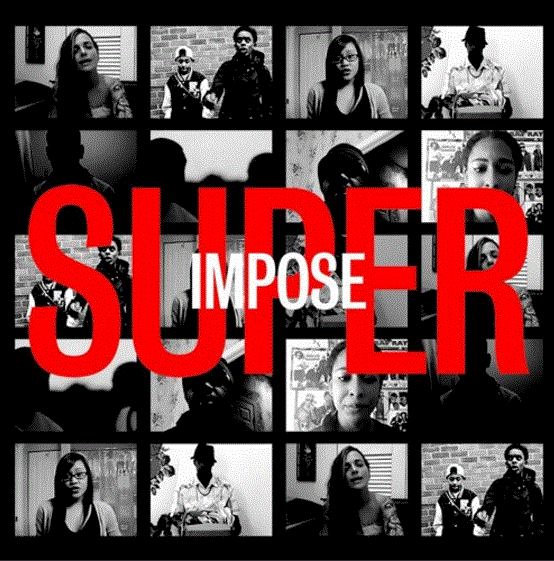
Oh my God, we did it. We made it. We came through. We’re on the other side. I have never been so proud of us. Now let’s not do this again — any of it — for at least four years. Here’s another terrific track from The Range, please do enjoy. And pat yourself on the back, you totally deserve it.
(You might also enjoy this excerpt from Superimpose, a documentary about “the making of The Range’s new album Potential, which exclusively uses the voices of people who posted videos of themselves on YouTube. The documentary sheds light on the unique and varied human stories of the people featured on the album who were completely unknown to The Range (Brooklyn-based electronic producer James Hinton) when originally selected,” but it is totally up to you. After everything you’ve been through in the last two weeks you are free to do whatever you like now.)
New York City, July 27, 2016

★★★ The air had thinned out; the body venturing outside braced itself against a crushing blow that didn’t fall. Day campers in their color-coded t-shirts converged on their different camp sites. When morning camp let out, the shade was still pleasant. The full sun was not, but someone was choosing to bake in it, on the rooftop opposite. The occupied portion of the seating around Verdi Square made a map of where the shadows fell. An electric guitarist set up outside the pizza place, even as the late heat began to soak into the shade there. At the children’s bedtime, turning on the air conditioner produced no cold air but caused the lights to brighten and dim erratically. The uncanny brownout—the dishwasher but not the fridge, the lamp at one end of the living room but not the other—persisted through an hour and a half of maintenance work and the installation of a new air conditioning unit, the apartment growing warmer all the while, till finally it could be traced to a master fuse out in the hallway, which had faltered under the strain of the cooling work.
How To Get Rid Of Books

First, you have to identify the keepers. A book is safe in my home if it meets any of the following criteria:
- a) I like it.
- b) I like its author.
- c) I intend to like it when I get around to reading it.
- d) It’s a classic.
- e) It has sentimental value.
- f) It’s autographed (e.g., my long-dead grandfather’s personalized copy of J. Edgar Hoover’s Masters of Deceit: The Story of Communism in America and How to Fight It).
- g) Its premise amuses me (I Was Jacqueline Kennedy’s Dressmaker).
A book’s days on my shelf are probably numbered if any of the following are true:
- a) It has monetary value. (I once sold an old Charlotte’s Web with a ripped dust jacket and an early-edition jacketless Hemingway to an antiquarian bookseller for $200; almost as valuable was the three inches of shelf space I gained.)
- b) It’s serving as what one “Seinfeld” episode called a “trophy” — a prize for having read it.
- c) It’s a galley.
- d) It’s a remainder.
- e) It’s a library edition.
- f) It has “Book of the Month Club” on it.
- g) It has written-on pages and/or torn-off bits of cover.
- h) It was built by a book-making robot.
Re: c) through h): I’ve spent enough time working in bookstores over the years to know that such volumes rarely have resale value. And yes, I see that this argument fights with a).
“But what if I like those books?” you say. Well, then check them out at your library. You have too many books too, you know.
It’s now time for you to start reading whatever’s left on your shelves. It’s like that “I Love Lucy” episode: for some larky reason, refrigerator-deficient Lucy and Ethel have so much perishable food on hand that they have no choice but to eat it. Actually, that never happened on “I Love Lucy,” but it might have, and it should have, to bolster my point.
If you read a book from your shelves and dislike it, then this is a good day for you: now you can ditch it. If you’re lucky, you’ll end up strenuously disliking a book by an until-now untried author whose work you have in multiplicity. I’m not naming names, but fairly recently I read a fat, exalted novel and had the pleasure of getting rid of it and its shelf neighbors too. This is your grand opportunity to take a position on an author, your stance apparent by virtue of his or her name’s comprehensive omission from your bookshelves. Take that, [redacted].
The all-or-nothing approach to author retention can present problems. I’m holding on to my copy of Marilyn French’s The Women’s Room — I didn’t adore it, but come on: it’s a classic, it took forever to read, and maybe there’s something to Seinfeld’s book-equals-trophy idea — and yet I have serious doubts that I will like the other Marilyn French novel that I own, based on the dust flap description (which includes a giant typo; did not even the publisher care about this book?). When you have such a dilemma, and you will, it’s best to move on to another probable candidate for the axe.
Sometimes what seems like a sure thing will disappoint you. Take Sigrid Nunez’s Mitz: The Marmoset of Bloomsbury. Truth told, while I respect animals enough not to eat them, I don’t really like them. So what were the odds that I’d love this novel, which intoxicated me with its fine handling of Virginia and Leonard’s twilight-years affections as they doted on their weird pet? Alas, I had to keep it.
Not having any luck disliking a book? Take heart: if your collection is like mine, you may very well find a book on your shelf that is literally breaking. This is spectacular news. The Woman in White, One Flew Over the Cuckoo’s Nest, What Maisie Knew — all three ended up in my recycling bin. The only catch is that you must read the book — in separate pieces, if necessary — before you recycle it because its binding probably wouldn’t be crumbling if it wasn’t at least half a century old, which means that someone, likely not even you, toted it around for decades, and maybe they even read it, and it would be a shameful waste of their energies, and, frankly, ungrateful of you to unceremoniously chuck it just for the sin of decomposing. (It can’t help decomposing.) Plus, you must’ve kept it on your shelf for a reason: don’t you want to know what you think of it? And yes, you do have to finish it. I’m still haunted by having started and abandoned The Good Earth twenty-five years ago. Fortunately, I lost the book. Otherwise what would I have done when I had to accommodate my recently deceased mother-in-law’s copy?
Because you’ve read this far, it seems only right to tell you now what I’ve come to realize after two years of seeking out shelf duds: you should really stop kidding yourself. You’ll always have more books than space for them. You’ll never achieve bookshelf equilibrium. You are up against too much. Older relatives will continue to die, and you’ll get their books. And look at that: there’s a box of free books on the sidewalk in your neighborhood. Who knew that Hoagy Carmichael wrote an autobiography? You can’t be expected to walk on by. And are you really supposed to resist owning both wide-load volumes making up Library of America’s Women Crime Writers: Eight Suspense Novels of the 1940s and ’50s? Also, you are just the sort of idiot who would buy your bass-playing husband Stone Alone, the ex–Rolling Stone Bill Wyman’s five-hundred-page memoir, for Christmas. Where is your husband going to keep it: the refrigerator? There’s no room in there either, as Lucy and Ethel will tell you.
Nell Beram is a former Atlantic Monthly staff editor and coauthor of Yoko Ono: Collector of Skies (Abrams, 2013). Her writing has appeared at Salon and Slate and in The Threepenny Review, V magazine, and elsewhere.
This One Tweet Says Everything About The Stupid Way We Live Now
Does this remind you of you? It should.
Query:
When’s the last time you saw a Pokémon you cared about?
— @knguyen
This man has just asked a question that reflects the hollow, wanting spirit of our age. Even if you’re not playing Pokemon you get it, because while it’s not a metaphor it also SO IS a metaphor. When’s the last time you saw anything you cared about, and how soon after that did you stop seeing it? Leave a response!

Among the Lizard People
Silent Connections at the Reptile Expo
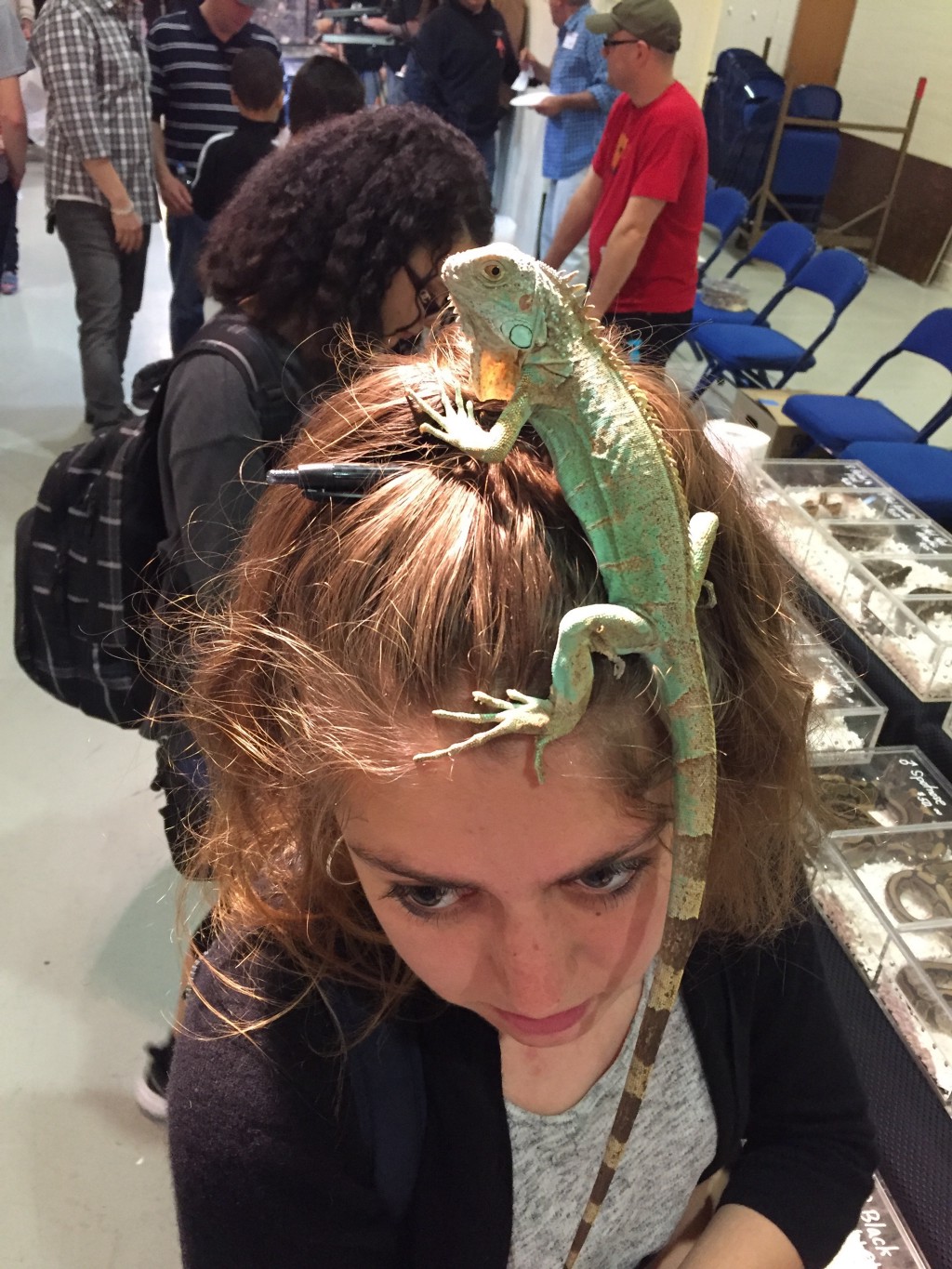
On April 17th, about eight hundred people made their way down to the Westchester County Center for the White Plains Annual Reptile Expo. The entrance resembled a music festival: men in food trucks called out to the masses while others tried to peddle T-shirts and freeze-dried crocodile heads. The back seat of the Jetta next to mine was packed to the roof with grasshoppers. Ten dollars and one hand stamp gave access to a high school-like gymnasium with booths packed so tight you had to squeeze past something scaly just to get a corn dog. The air was thick with the scent of mealworms and formaldehyde, and the faint sounds of dated pop music.
Pets are generally owned for company; they’re surrogates for human interaction. The appeal of dogs is clear: It’s natural to crave the heat and weight of a body, even if it’s furry. Dogs are responsive to their owners, and have an unspoken fondness for them that’s evident through nuzzling and cuddling. But a reptile will not nuzzle. It will not purr or retrieve a tennis ball. At its most serene, a lizard won’t interact with you any differently than it would a branch. It’s a strange thing to keep a creature you have no hope of developing a relationship with.
There was a crowd around a very tiny man selling very tiny frogs. The frogs were spectacular, about the size of a piece of popcorn with a splattering of colors, each a mini Pollock. “Gorgeous,” a woman said, as though browsing the counter at Tiffany’s. Another vendor pushing seven-thousand-dollar crested geckos told me he’s sold to everyone from Jean-Luc Godard to Tony Hawke.
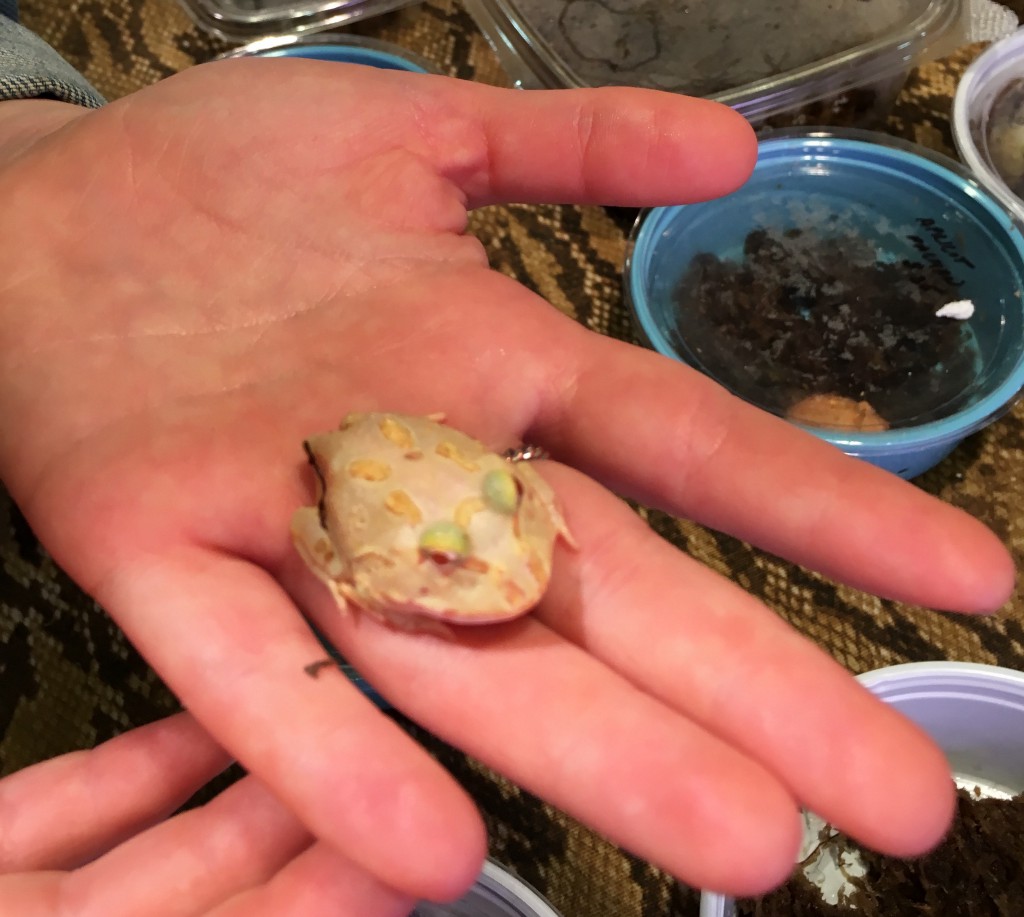
Amy the peppy representative at a booth called SnakeLand, looked to be in her late forties. She smiled, revealing two rows of bubblegum-pink braces. Snakes covered the table’s surface, each balled up and crammed into the kind of container I’ve only ever seen chicken tenders served in. One of the boxes was not for sale.
“Yeah, that’s my guy.” Amy said. “The breeder. He’s just here for show.”
She picked up the snake, a milky yellow Python about as thick as a roll of toilet paper, and draped it around her neck like a scarf. “He hangs out with me while I do the dishes or laundry. He’s like a scaly puppy dog.”
The corn snake vendor was a skinny man in the midst of a sale. Two girls passed a wisp of a snake back and forth and murmured to each other. Feeling the match was right, they finally asked him the snake’s gender.
“I’ll check for you,” he said reluctantly.
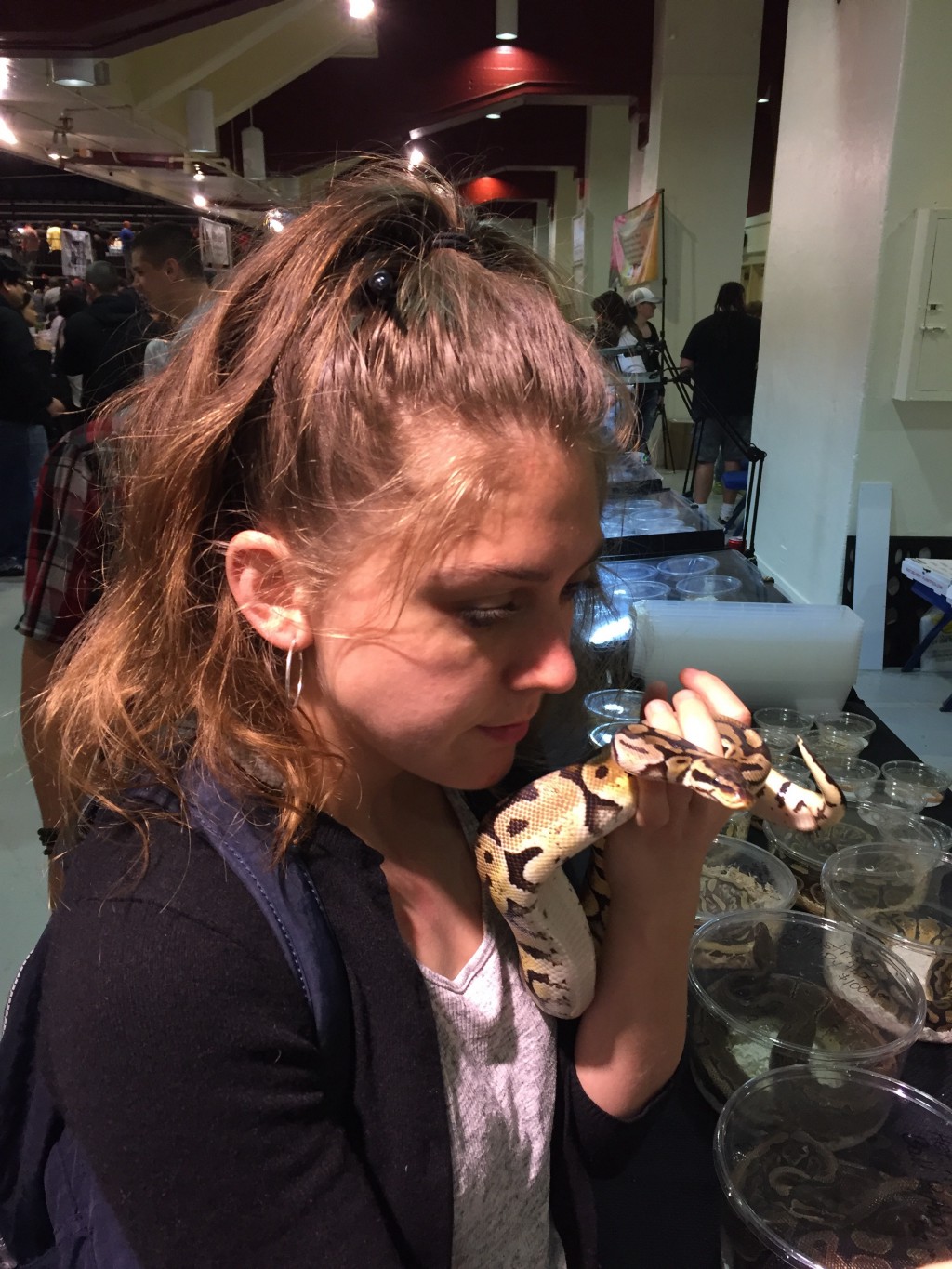
I leaned in closer as the man flipped the snake over and began rubbing back its scales. They parted ways to reveal a small slit no thicker than a thumbnail. The man turned a deep shade of red.
“Uh-oh, it’s female.” He put it down. “I — I have to go wash my hands.”
He ran off, leaving us alone with the aroused corn snake. One girl leaned over to the other, “For God’s sakes, it’s just a snake vagina.”
The Tortoise woman stood statue-still behind her booth, dressed in a long coat with a ruffle collar and tiny circular spectacles. Many of the vendors had a particular look, and hers appeared to be 1880s Prussia.
“How big can these guys get?” I asked.
“Up to 18 pounds.”
I asked her how she got into tortoise breeding.
“I got my first male and female four or five years ago and purchased an incubator soon after.”
“I mean what inspired you to get the turtles in the first place?”
“Tortoises,” she corrected, but didn’t seem to have an answer for me. What I really wanted to ask was why she’d chosen the least enthusiastic pets on the planet to dedicate her time to.
“My daughter graduated from USC last spring.” She did what any empty-nester would do; started breeding land tortoises.
As a child, I had debilitating dog and cat allergies. During my parents’ lengthy separation, my father got me Spike, a Bearded Dragon, in lieu of a puppy. Spike became my confidant for all of first grade. I talked to him for hours, pushed him around in my Barbie car, and cuddled him at night until his body temperature got too low and he had to go back under the heat lamp. When he got mad or stressed out, flaps of skin would protrude from his neck like a Shakespearean ruff. I can still picture Spike’s knowing look. His mouth started under each eye and stretched across his whole head in what I interpreted as a coy smile. He just got me. Then Spike got a metabolic bone disease and died. My parents divorced, my dad got a new wife and a golden retriever, and I got an inhaler.

Lunchtime for humans was 12:00, and for reptiles, 12:30. I reached into a large ice cream cooler to discover it was packed with frozen rodents. There were rats and mice, some large and come small and fetus-like, packed popsicle-style in Ziploc bags. The most alarming were the frozen guinea pigs. Huge, eyes open, mouths contorted, and paws out as though they’d been petrified mid-leap. What could possibly eat something so big, I wondered.

Nelson was not in a chicken-tenders container but a steel cage. According to the fact sheet next to him, he was 15 years old and weighed 25 pounds. He looked like he could have been an extra in Jurassic Park. His great legs and jaw were not those of a lizard but of some primordial fish monster in the throes of evolution.
“He can live up to 45. Longer with the right care and a healthy diet.” Nelson’s owner boasted.
In the cage there was what appeared to be an untouched salad. A jar next to him was raising money for his care. The jar was filled with twenties. Nelson was going to outlive us all.
“He’s quite friendly,” explained the owner as the lizard lusted after a juicy toddler in the booth next door. I asked her how she came to have Nelson.
“He came to me, really.” Of course, this was impossible, unless she was wandering around the jungles of the late Cretaceous period. She took me aside to elaborate. “My son lost his battle with cancer years ago, and I didn’t know what to do with myself. My time had been consumed with helping him for so long, and then nothing. I was going crazy. Then I saw an ad for a young Rhinoceros Iguana that needed a home. Nelson needs lots of care, so I started to feel useful again. We don’t have much money, so we come to these things to fundraise. Yup, he’s my guardian angel.” She smiled.
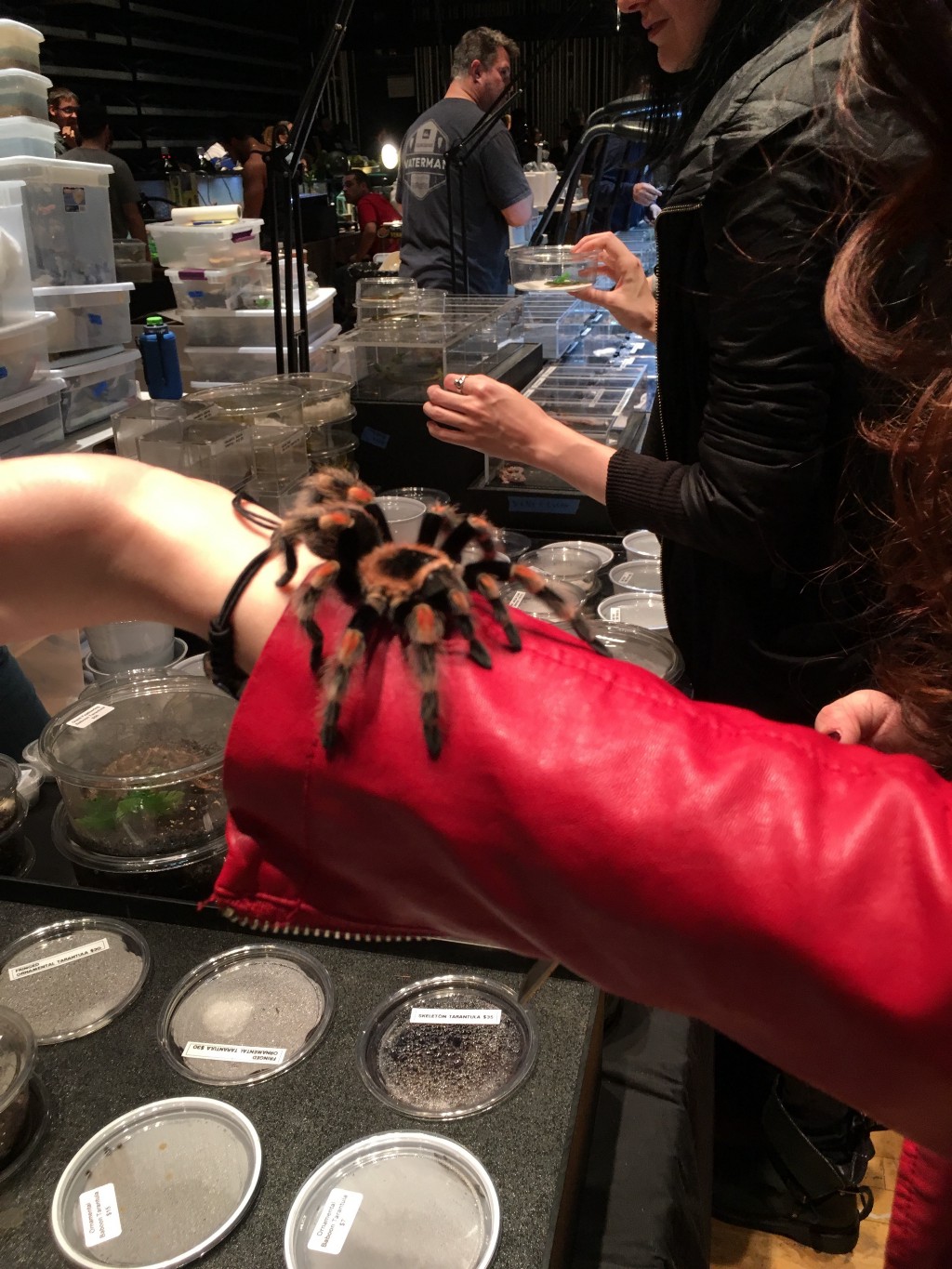
The solace I once took in Spike, that unspoken connection no one else could understand, which maybe didn’t even exist, echoed all over the Convention Center. A lizard’s inhuman qualities are its appeal. They are whatever you need them to be—loving, smiling, a good listener — because the relationship is all a projection. The creatures there that day, the Spikes and the Nelsons, were like fork-tongued therapists, sitting there listening in unsettling silence.
When I saw the Bearded Dragons, my heart swelled. The gold-breasted beasts had the same long mouths carved across their faces that, as a child, I’d understood to be a smile. The vendor handed one over in an attempt to make a sale off my nostalgia. It cocked its head up at me with that permanent grin and it all flooded back. He looked just like Spike. And he was not determining whether I was a giant cricket or not, he was looking into my heart, my lonely childhood soul that didn’t understand separation or divorce or cat allergies any more than he did. The way his warm belly pressed against my palm and his nails caught in the fabric of my shirt was so familiar. His owner, a stocky woman wearing a man’s blazer over a shirt depicting a bedazzled outline of the state of Texas, told me his name was Cinnamon. She saw my growing affinity for the creature and gently recollected him into the booth.
“He’s $150,” she said
“I had one when I was younger that looked just like him. It’s uncanny.”
“Just like him?” Cinnamon’s owner scoffed. “Cinnamon has very distinguishing spots on his back, see, here. Most Pogona Bearded Dragons don’t have markings like these.”
I nodded, feeling foolish that I hadn’t noticed before.
“He just sort of feels like my old lizard, you know?”
She didn’t and it was time to move on anyway. It was feeding time for a neighboring boa constrictor and I didn’t want to miss it.
A Poem by Diane Martin
Shutting the Door
behind which lurks prince or tiger,
equally dangerous. We are meat
for both, me and my conjoined twin
who wears her heart outside her body,
slung beneath the shoulder
so easy to grab, bite, break.
So we are keen to let the door stay
latched and fastened with a chain
though who’s to say if what shields
us also locks us in.
Diane Martin’s poems are forthcoming or have appeared in Kenyon Review, Field, New England Review, and many other journals and anthologies. Her first collection, Conjugated Visits, a National Poetry Series finalist, was published by Dream Horse Press.
The Poetry Section is edited by Mark Bibbins.
Complete Walkthru, "Intuition Brought Me Here"
You know what’s better than today? Tomorrow.
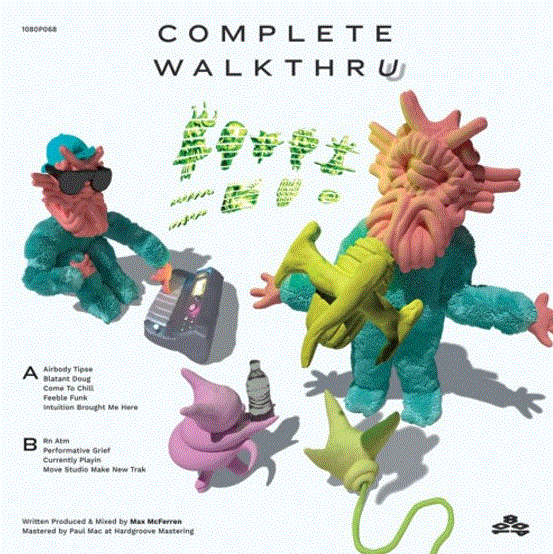
Tomorrow the conventions will be over, the heat will be over and the week will be over. Doesn’t tomorrow sound amazing? And yet here you are, stuck in the hell that is today. Maybe this will distract you for a few minutes. Enjoy.
New York City, July 26, 2016

★★ People were venturing to sit outside at cafe tables in the morning, even as the air above the sidewalks grew thicker and thicker with newly evaporated water. Walking in the sun was a mistake, but by the middle of the day, enough clouds had showed up to make things survivable outdoors. The subway air conditioning ranged from full-force to nonexistent, with some cars struggling in the middle. By rush hour the wet heaviness of the morning had been replaced with a hot stiffness. Who were the people still wearing black—black shirts, black pants—in the stripped-down and loosely wrapped crowds? How were they doing it? The sun went down in saturated colors, wonderful if you were watching it from behind a window, with the air conditioner on.
How To Read A Book And Walk At The Same Time
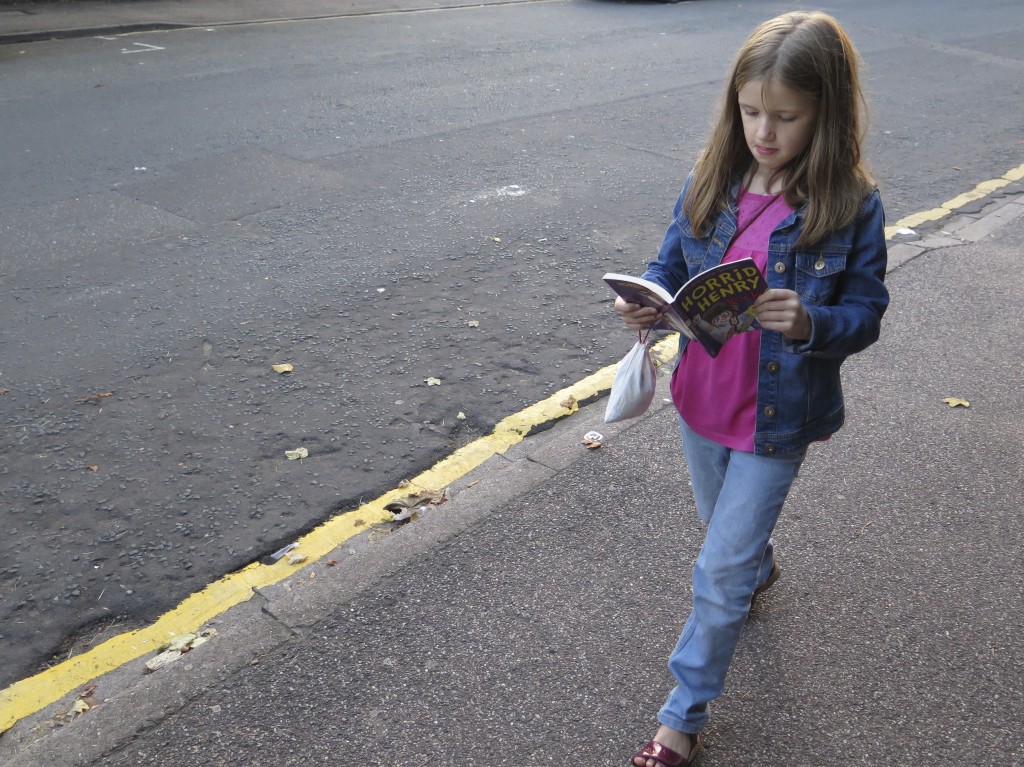
When I had a real job a few years ago, my friend and coworker the food writer Peggy Grodinsky convinced me that it’s possible to read and walk at the same time. She was routinely reading and walking to and from work and exhibited no rips in her hemlines from having listed into a bush, no bruises from having confronted a lamppost. I had to try it.
I had been walking nearly an hour each way to and from work out of cheapness embellished with principle: walking is free, it’s exercise, you’re engaging with your world, and it forces you to commune with your thoughts (because there’s nothing else to do). But after three years I had to admit the horrific truth: I had grown tired of my mind.
I have excellent vision, so I knew I was a good candidate for reading while walking. It’s actually easier than it looks, unless it’s wintertime, when you feel as grounded as a nearsighted marble going down an icy-sidewalk chute. I never collided with anything, although I did have a near miss with a human. Overall, fellow walkers are friendly. “That must be a good book,” I got once or twice, and once, “I do that too.” Apparently there are several of us.
Some ground rules for reading while walking. First (and I really shouldn’t have to tell you this), stop reading when you cross the street. Second, forgo magazines. The columns are too narrow, forcing the eyes to skid to a stop at the end of a line as soon as they’ve gotten going. Plus, magazines are floppy, and the wind gets grope-y with the broad pages. So go with a book, ideally a hardback that you can hold comfortably in one hand. (Two-handed reading while walking doesn’t work for some reason. Also, with one-handed reading you can put your free hand in your pocket for warmth.)
When you want to read a long book, for reasons of weight a paperback must do, and you’ll just have to suck it up re: its inevitably smaller print and wind-catchingly thinner pages. Unexpected ways to further lighten your load may present themselves. My yellowed-with-age, mass-market edition of Wilkie Collins’s The Woman in White was bulky in my hand until the book started to fall apart, and I discovered that I could break off full sections after I finished reading them and park them at home, leaving me to walk with whatever smaller chunk of novel was left. This is an imperfect science, though: the pages on either end of the chunk were gradually peeling away from their gummy binding, and when I neared the book’s knuckle-biter conclusion I discovered that I couldn’t find pages 621/622 — the bastard wind had stolen them. I had to borrow a library copy with a smugly intact spine. The book was so elephantine that alas, I had no choice: I read the last forty-odd pages seated.
The sectional-reading-and-walking experience felt like a coup from a physical-comfort perspective, but if you read-and-walk at night you should know that it’s hard to get a book light to clip to what you have left without the clipped-to pages tipping over backward in a miniature pratfall. Also, while you look kind of dopey reading while walking, the addition of a book light makes you resemble a true psycho. But you’ll be knocking off books as you never have before. If dignity is the only price, what do you care?
While I’ve come to accept that, even if I give up sleeping, I won’t have time to read every book that I want to before I die, reading while walking to and from work meant that I’d essentially added a twenty-fifth and a twenty-sixth hour to my day. I would beat the system. What system? The march of time, I suppose.
One day I fell while walking on the ice, but I wasn’t reading: I slipped while walking my daughter to school, landed on my ass, and smacked the back of my head on the sidewalk. Did my head persist in hurting? Was I nauseous? No and no, and the threat of concussion evaporated. But a few days later I realized that my left wrist hurt — a casualty of my fall, I concluded. In the days that followed I tried to hold my book exclusively in my dominant right hand instead of switching off, as I usually did. But my right hand would get tired, so now and then I reverted to holding the book in my left hand, which still hurt. It finally dawned on me that the fall hadn’t caused my wrist to ache: it was my books.
I forgot to tell you: your book cannot exceed fourteen ounces or it will murder your wrist. According to my food scale, a hardback copy of Married: A Fine Predicament, a lint trap of Anne Roiphe’s thoughts on matrimony, weighs one pound and three-eighths of an ounce, and it really was too heavy for one hand, although it was also so engrossing that I read most of it upright while in motion. My hardback of Sigrid Nunez’s novel Mitz: The Marmoset of Bloomsbury was ten ounces of ergonomic bliss.
Now you’re going to tell me that getting an e-reader will solve both the heaviness problem and the lighting problem. Well, evidently you didn’t hear what a writer at a roundtable that I attended said: while she cherished her Kindle, she was conscious that she didn’t give a book as much of a chance as she would if she didn’t have a half-dozen fallbacks just a few clicks away. Because I’m a compulsive book finisher, this is the greatest glory of old-school reading while walking: whereas I found Wallace Stegner’s A Shooting Star tiresome and unfinishable when I was reading it at home, I found the eleven-and-three-eighth-ounce paperback tiresome but eminently finishable while walking. How does that work? Walking renders any book on hand finishable because your only alternative is your mind, and haven’t you had enough of that?
Nell Beram is a former Atlantic Monthly staff editor and coauthor of Yoko Ono: Collector of Skies (Abrams, 2013). Her writing has appeared at Salon and Slate and in The Threepenny Review, V magazine, and elsewhere.
